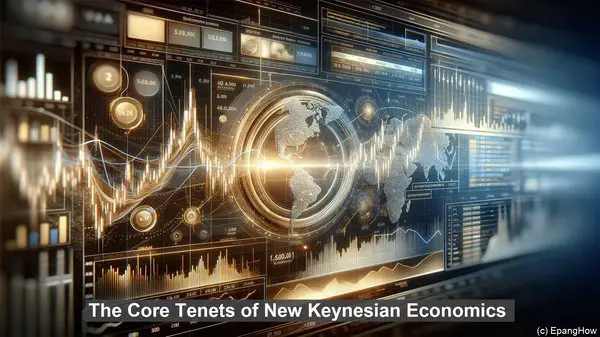Introduction: The Diverse Schools of Thought in Macroeconomics
Hello everyone! Macroeconomics, the study of the overall economy, is a complex field with various schools of thought. Today, we’ll explore two prominent ones: New Keynesian economics and New Classical economics. While they share some common ground, their divergent views on market dynamics and policy implications make for an intriguing comparison.

The Core Tenets of New Keynesian Economics
New Keynesian economics, as the name suggests, builds upon the ideas of the renowned economist John Maynard Keynes. It emphasizes the role of aggregate demand in shaping economic outcomes. According to New Keynesians, prices and wages are sticky, meaning they don’t adjust rapidly to changes in demand. This stickiness leads to market inefficiencies and can result in prolonged periods of unemployment or inflation. To address these issues, New Keynesians advocate for active government intervention, such as fiscal stimulus or monetary policy adjustments, to stabilize the economy.
The Key Propositions of New Classical Economics
On the other side of the spectrum, we have New Classical economics, which gained prominence in the 1970s. New Classical economists, like Robert Lucas, emphasize the importance of rational expectations and market clearing. They argue that individuals and firms have rational expectations about future economic conditions and adjust their behavior accordingly. In this view, markets are highly efficient and self-correcting. New Classical economists are skeptical of the effectiveness of government intervention, as they believe it can lead to unintended consequences and distortions in the market’s natural mechanisms.

Implications for Economic Policies
The divergent views of New Keynesian and New Classical economics have significant implications for economic policies. New Keynesians argue that in times of economic downturns, such as recessions, government intervention is crucial to stimulate demand and restore growth. They advocate for measures like increased government spending or tax cuts. On the other hand, New Classical economists contend that such interventions can create market distortions and hinder the economy’s self-correcting mechanisms. They often favor a more hands-off approach, allowing markets to adjust naturally.
The Real-World Complexity: Synthesis and Critiques
While New Keynesian and New Classical economics present distinct perspectives, the real-world is often a blend of both. Many modern macroeconomic models incorporate elements from both schools of thought. Additionally, both approaches have faced criticisms. New Keynesian economics has been criticized for its assumptions about price stickiness, while New Classical economics has faced scrutiny for its reliance on rational expectations, which some argue may not always hold in practice.
